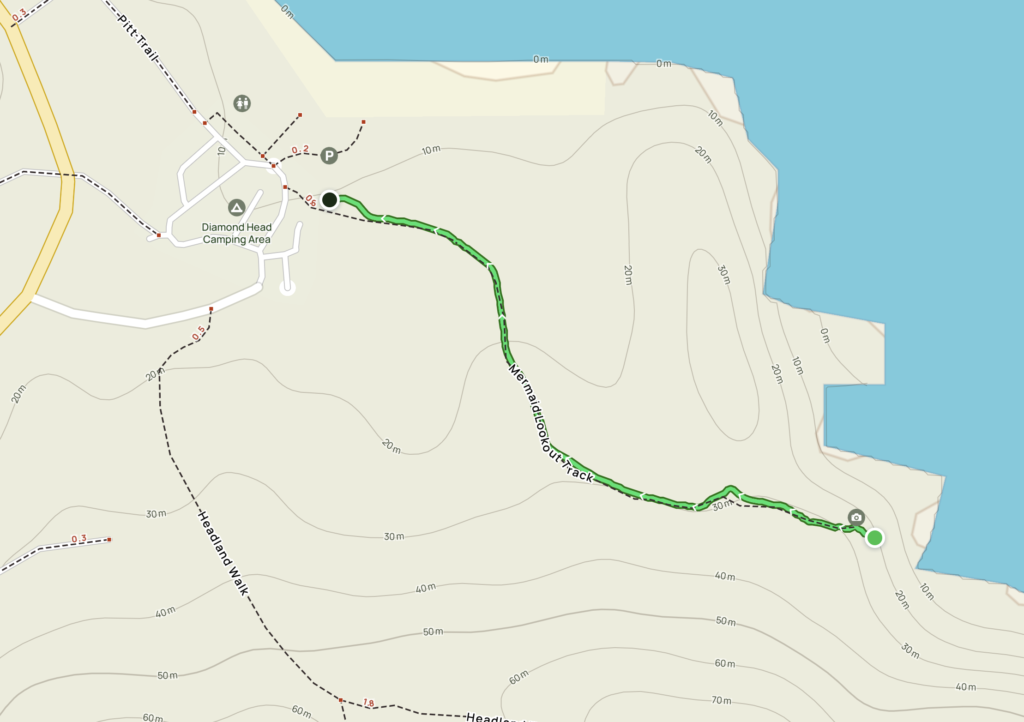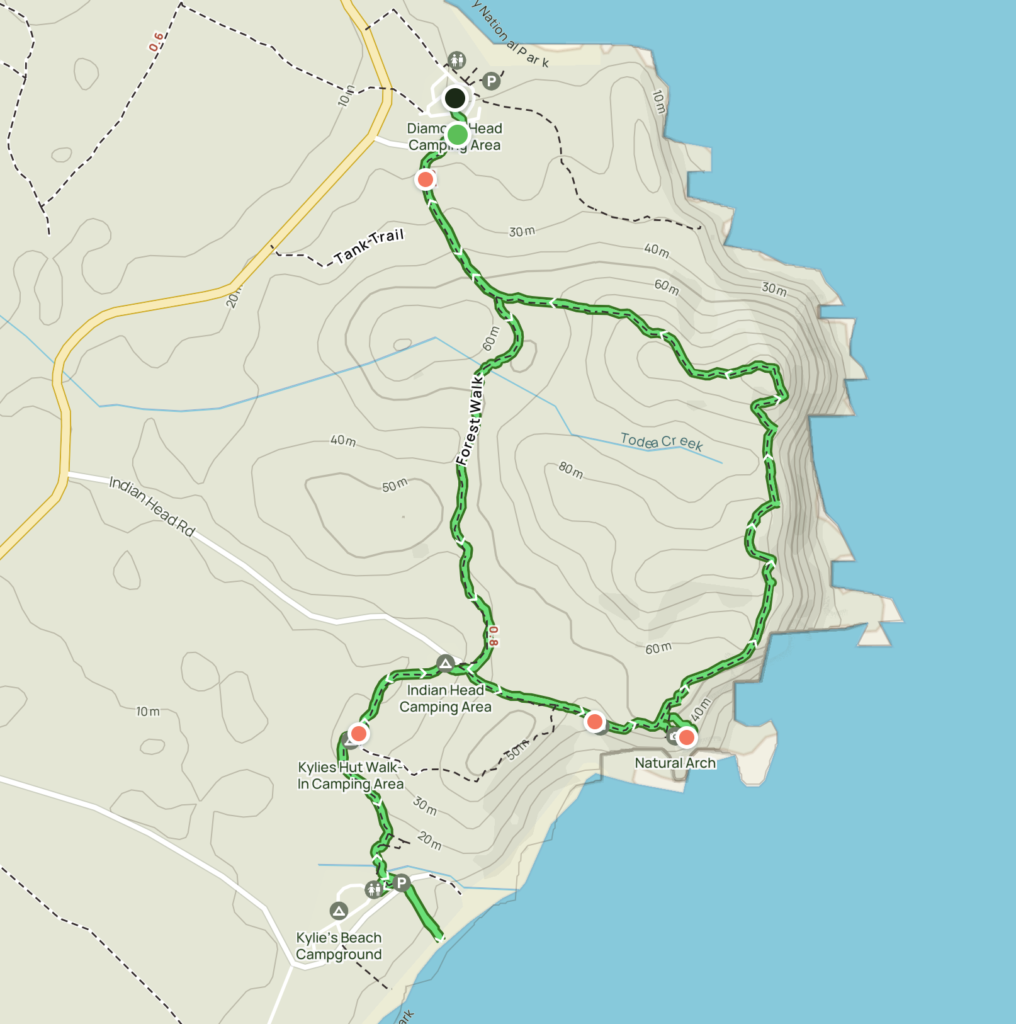
Diamond Head Camping
Crowdy Bay National Park
At the northern end of Crowdy Bay National Park, tucked at the bottom of South Dunbogan Beach, is a lovely camping area with excellent facilities. I have a preference for camping in National Parks rather than caravan parks, more back to nature and hopefully less people. Sadly, these days that is becoming more difficult to find.
Diamond Head Camping area, although it is run by NSWNP, is somewhere in the middle. Flushing toilets and (cold) showers, a dump point, grassy sites, and paved roads give it the feel of a caravan park. Yet it is in a National Park and the inquisitive local eastern grey kangaroos remind you that you are in the bush. There is direct access to beautiful South Dunbogan Beach for pedestrians and cars (beach driving permit required) and some great walks around the headland. National Park does mean no dogs allowed and there is no fresh water so top up before you arrive.
It was busy when we stayed, but in fairness it was a long weekend. We focused on the walks, the beach, the kangaroos checking out our setup and the fact that we were allowed to have a campfire in our little firepit (always a plus in my books) and tried to ignore the crowds.



Exploring
You can’t stay at Diamond Head without going for a stroll along South Dunbogan Beach – preferably at sunrise or sunset. 10km of white sand stretching out around the cove. Dolphins are frequently seen surfing in the waves and other than the occasional fisherman you will not see many people. At the south end of the beach, at the base of the headland, a large rock platform is home to many rockpools begging to be explored. Walk over the rocks for a closer look at Split Rock, an enormous rocky outcrop with a narrow cleft dividing it. You can walk through the weathered corridor to the crashing waves on the other side.
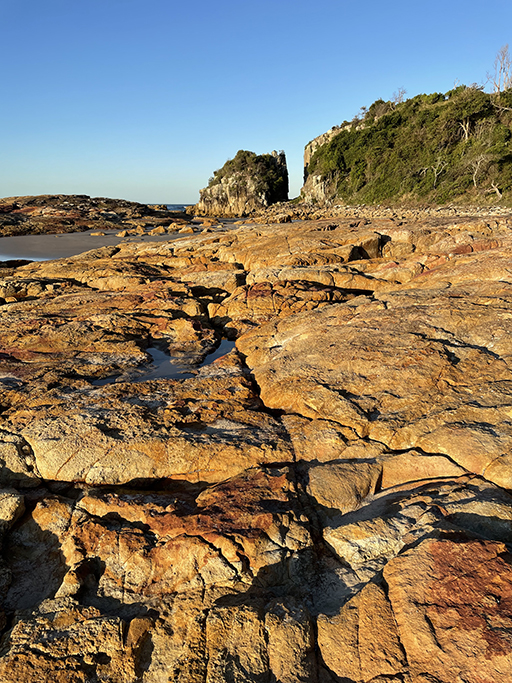



Hiking
Mermaid Lookout | 1.2km return | easy
This short walk along the north side of the headland takes you to a lookout with views up the coast toward North Brother and Camden Head. The views are somewhat obstructed but the walk through the heath includes many wildflowers and is pleasant way to stretch your legs.


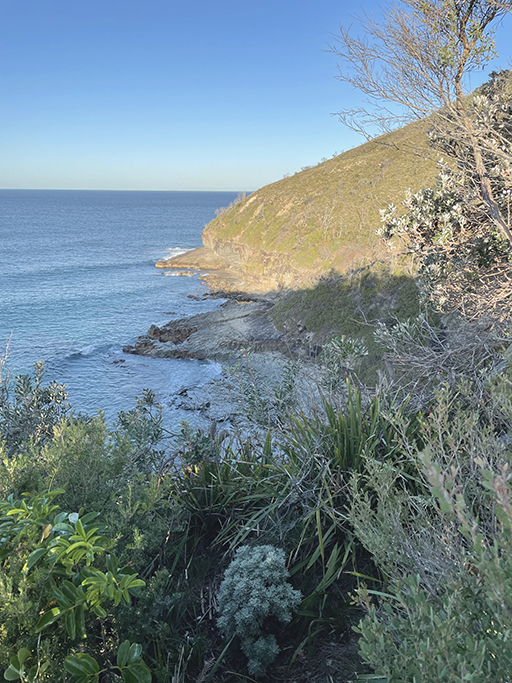
Diamond Head Loop | 6.2km | moderate
The Diamond Head walk offers lovely views, whale watching vantage points, and many wildflowers during spring. Linking together several shorter walking trails, the Diamond Head Loop circles the entire headland past rock formations, beautiful beaches, lush forest, and fantastic coastal views.
Starting just next to the entrance to the Diamond Head Campground, a gravel walking trail heads gently upwards, through open grassland scattered with wildflowers. After 500m there is a fork in the road, turn right at the intersection into Forest Walk through what remains of a stand of casuarinas. The blackened trunks are the result of the 2019 bush fires which were devastating in this area. New growth is evident all around and hopefully soon the landscape will resemble something close to its previous beauty. The track descends into a gully that managed to escape the flames and the path is lined with ferns.



Emerging from the trees brings you to Indian Head Campground, one of three other campgrounds in Crowdy Bay National Park. Head down the road to the left past the amenities block and a locked gate along Kylie’s Hut Trail, an unsealed access road that leads, you guessed it, to Kylie’s Hut.
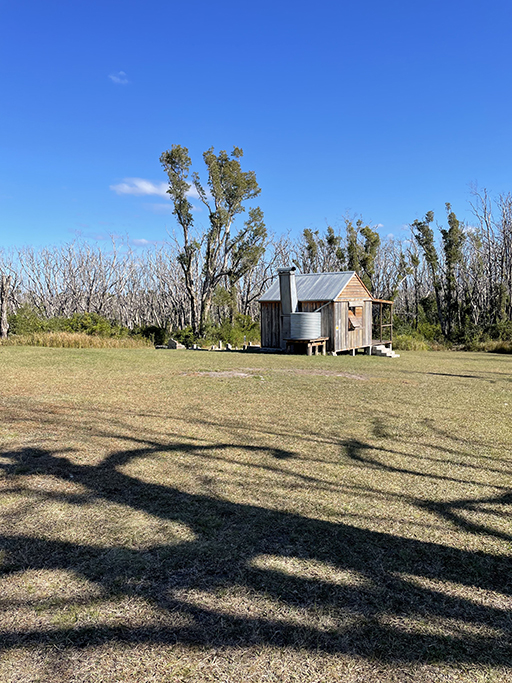


The small hut was built in the late 1960s for Kylie Tenant, an award-winning Australian author, by local farmer Ernie Metcalfe. She used it as a writing retreat, and it was during her time here that she wrote The Man on the Headland inspired by Ernie and the natural beauty of Crowdy Bay. Eventually Kylie donated this and the surrounding land to form part of the Crowdy Bay National Park. The cabin was burnt down during the 2019 bushfires and has been painstakingly rebuilt, sitting in the clearing next to the foundations of the original hut.
Across the grass near the hut there is a small sign for Metcalfs Walk back into the bush. This narrow trail will take you past Kylie’s Beach Campground, over the dunes and down to the long stretch of sand that curves around Crowdy Bay. A lovely spot to stop for a rest before tackling the walk up the headland.
Retrace your steps back past the cottage. Don’t be fooled by what appears to be another fire trail from the top of the clearing, this soon pitters out. Keep going back to Indian Head Campground and rejoin the main Diamond Head Loop Track. It is 400m up to Kylie’s Lookout through shaded forest that fades to heath as you climb the exposed headland. The lookout offers panoramic views across Crowdy Bay and the sands of Kylies Beach, where we were standing just minutes earlier.
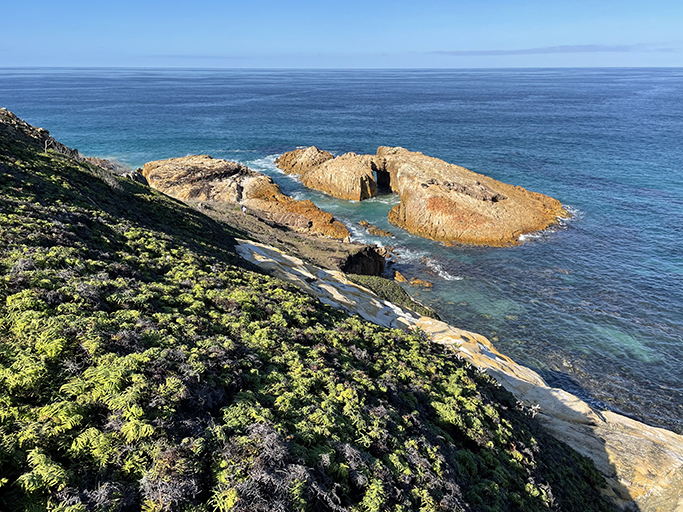
Shortly after Kylies lookout Natural Arch can be seen in the waves below. The rock formation sits just off the shore, and if you look from the right direction, you can see the channel that has been carved through the rock by thousands of years of waves. Coming off the main track there are a couple of narrow paths toward the side of the cliff that will give you a closer look. They are steep, loose gravel tracks so take care and don’t get too close to the edge.




Continuing around the headland, the trail undulates along the top of the cliffs with some lovely views up and down the coast. There are some brave souls fishing on the rocks below and many opportunities for dolphin and whale spotting. Of course, there are no guarantees that the wildlife will make an appearance, but we were lucky to see a whale making its way north along the coast.
The track to the peak of the headland is steeper, climbing up through the long grass, with the remains of charcoaled trees as constant reminders of the recent fires. Near the top there are impressive views to the west of the three Brothers rising from the hinterland. As you cross the top there is another patch of forest, before the track heads back down through the grasslands and heath returning to the campground where we began.
